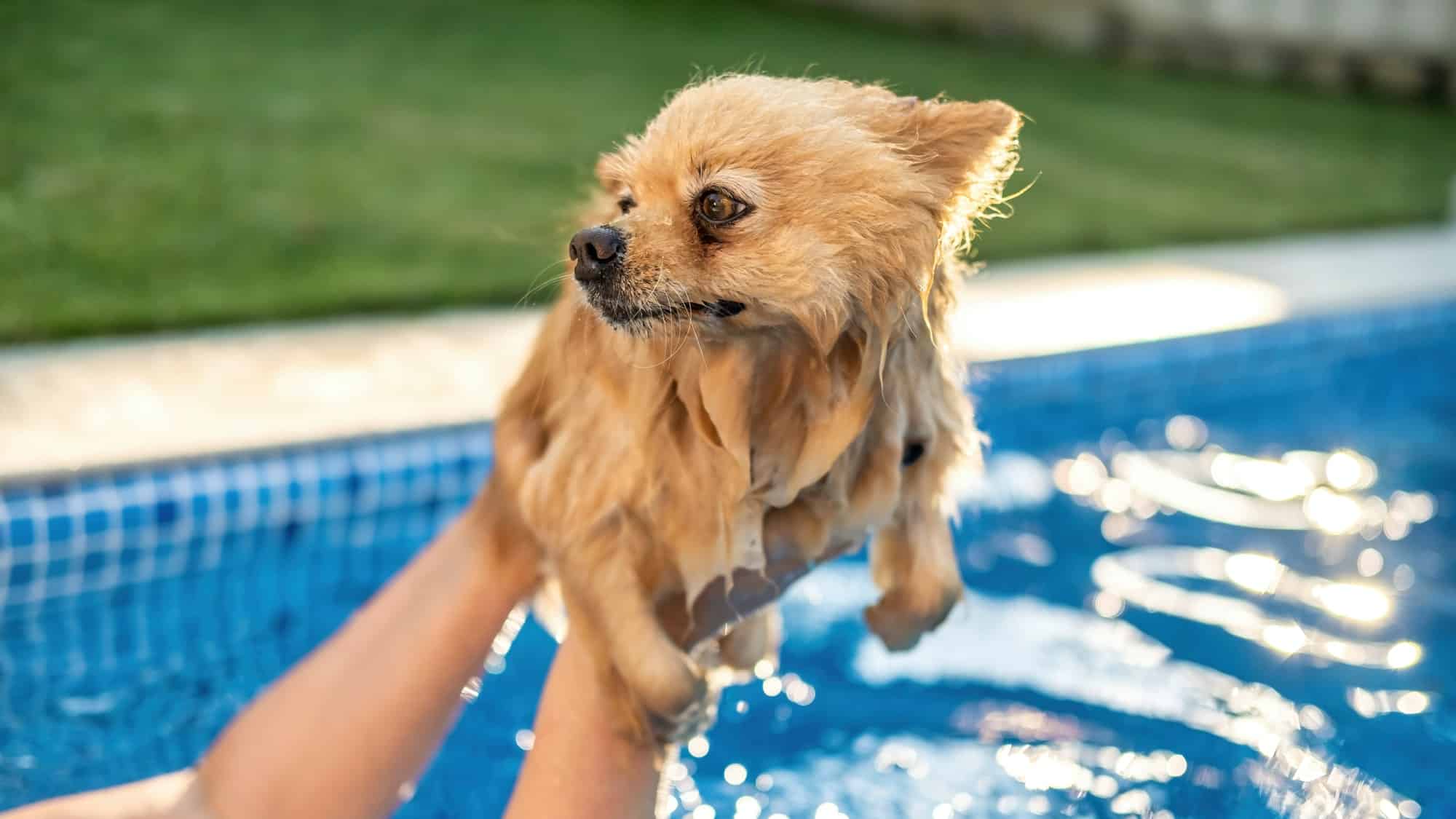If you’re an avid swimmer, you’re probably looking forward to the day when you can bring your pet along for a refreshing dip in the pool. But getting your furry friend comfortable with water isn’t always as straightforward as it seems. Just like humans, dogs have their own personalities and preferences, and not all dogs are natural swimmers. So, before you get your pup’s paws wet, it’s crucial to introduce your pet to water in a safe and controlled manner.
If done correctly, water can introduce a whole new world of fun and exercise for your pet. Not to mention, swimming is a fantastic way for dogs to cool down during those scorching summer days. In this article, we’ll guide you through the process of safely introducing your dog to water to ensure a positive and enjoyable experience for both of you.
Lire également : How to Effectively House Train an Older Rescue Dog?
Knowing Your Dog’s Breed and its Relationship With Water
Before dipping your dog’s toes into the water, it’s crucial to understand their breed and its relationship with water. Some dogs, like the Labrador Retriever or the Portuguese Water Dog, are known for their love of water and are natural swimmers. These breeds have webbed feet and water-resistant coats to help them navigate in water.
On the other hand, breeds such as Bulldogs, Pugs, and Dachshunds are not typically water-lovers. With their short legs and heavy bodies, swimming can be an exhausting, if not impossible, task. Additionally, their snub noses make it hard for them to keep their noses above water.
Cela peut vous intéresser : How to Treat Separation Anxiety in Cats?
Understanding your dog’s breed and its relationship with water will provide a useful context when beginning your water training adventure. It’s a crucial step in ensuring your pet’s safety and comfort.
Introducing Your Pet to Water
The process of introducing your dog to water should be a gradual one. This is critical to help your pet build up confidence around water and to ensure the experience is a positive one.
Start by introducing your pet to shallow, calm water. This could be a kiddie pool or a shallow part of a calm beach. Lead your dog into the water, letting them explore and get used to the new environment at their own pace. If your dog seems scared or hesitant, don’t force them in. Instead, coax them gently with toys or treats.
Remember, your pup will need time to understand that water is not something to be afraid of. It’s also important to keep your dog on a leash during this initial stage, to ensure you can quickly pull them out if necessary.
Training Your Dog to Swim
Now that your dog is comfortable around water, it’s time for swimming lessons. This might be a bit challenging, especially for dogs that are not natural swimmers. But with patience and positive reinforcement, your pet will soon get the hang of it.
Start by taking your dog to a pool or a calm body of water. The area should have a gentle slope, so your pet can gradually wade deeper into the water. Stand a short distance away from your dog and call them. If they don’t come, you might need to lead them in.
Support your dog’s body while they’re learning to paddle with their legs. Make sure their back is horizontal in the water, which is the correct swimming position for dogs.
Safety Measures During Water Activities
Safety should always be a priority when introducing your dog to water-based activities. Here are a few things that can help ensure your pet’s safety.
First, consider investing in a dog life jacket, especially if your pet is a weak swimmer. Life jackets provide extra buoyancy, making it easier for your dog to stay afloat. Also, they often come with handles that you can grab, making it easier to lift your dog out of the water if the need arises.
Never leave your dog unsupervised around water, even if they are a good swimmer. Accidents can happen in an instant, and your presence could be the difference between life and death.
Finally, ensure your dog has a way to get out of the water. If you’re swimming in a pool, train your dog to use the steps or ramp. In the case of natural bodies of water, ensure there is a shallow area where your dog can easily wade back to land.
Creating a Fun and Positive Experience
Regardless of the training and safety measures, the most important thing is to ensure the experience is fun and positive for your dog. Incorporate games and toys into your water activities. Not only will this keep your pet engaged, but it will also help them associate water with happy times.
Give your dog plenty of praises and treats when they make progress. Always end the session on a positive note, even if it’s just your dog getting their paws wet.
Remember, introducing your dog to water-based activities is not a one-time event. It’s a gradual process that might take days, weeks, or even months. So, always be patient with your pet, and before you know it, you’ll have a water-loving companion to join in on your swimming adventures.
Understanding Your Dog’s Physical Limitations in Water
Understanding your dog’s physical limitations in water is a critical component of introducing them to water-based activities. Just like in humans, physical stamina and strength can vary greatly from one dog to another. Age, health status and breed can all significantly affect your dog’s ability to swim or participate in water-based activities.
Younger dogs generally have more energy and stamina to swim longer distances. However, younger dogs can also become easily excited and may risk overexerting themselves. Therefore, it’s important to monitor their activity closely and ensure they take sufficient rest in between.
Older dogs, on the other hand, may have decreased stamina. Arthritis, heart disease, or general frailty can make swimming difficult, if not impossible, for some senior dogs.
Additionally, brachycephalic breeds (those with short noses and flat faces, like Bulldogs and Pugs) can struggle with swimming. Their facial structure makes it difficult for them to keep their noses above water.
Therefore, understanding your dog’s physical limitations will equip you to tailor your water activities accordingly, ensuring their safety and enjoyment. Always remember to consult with a veterinarian before introducing a new physical activity, especially if your dog has any health concerns.
Conclusion: The Rewarding Experience of Water Activities with Your Dog
Introducing your dog to water-based activities is not just about teaching them how to swim. It’s also about creating an enriching experience that you both can enjoy. Making the process gradual and pleasant, taking into account your dog’s breed and physical limitations, and prioritizing safety can all contribute to this goal.
Remember, each dog is unique. What works for one might not work for another. It’s important to remain patient and flexible, adjusting your approach as needed based on your pet’s reactions. Don’t get discouraged if progress is slow. The fact that you’re taking the time to engage your dog in a new activity is a testament to the loving care you provide as a pet parent.
In the end, the experience of splashing around in the water with your pet can be delightful. It offers an opportunity to bond, keep your pet active and healthy, and provide a much-needed respite from hot summer days. With proper preparation and training, you can safely introduce your dog to water-based activities, opening up a whole new world of adventures for you two to explore together.






